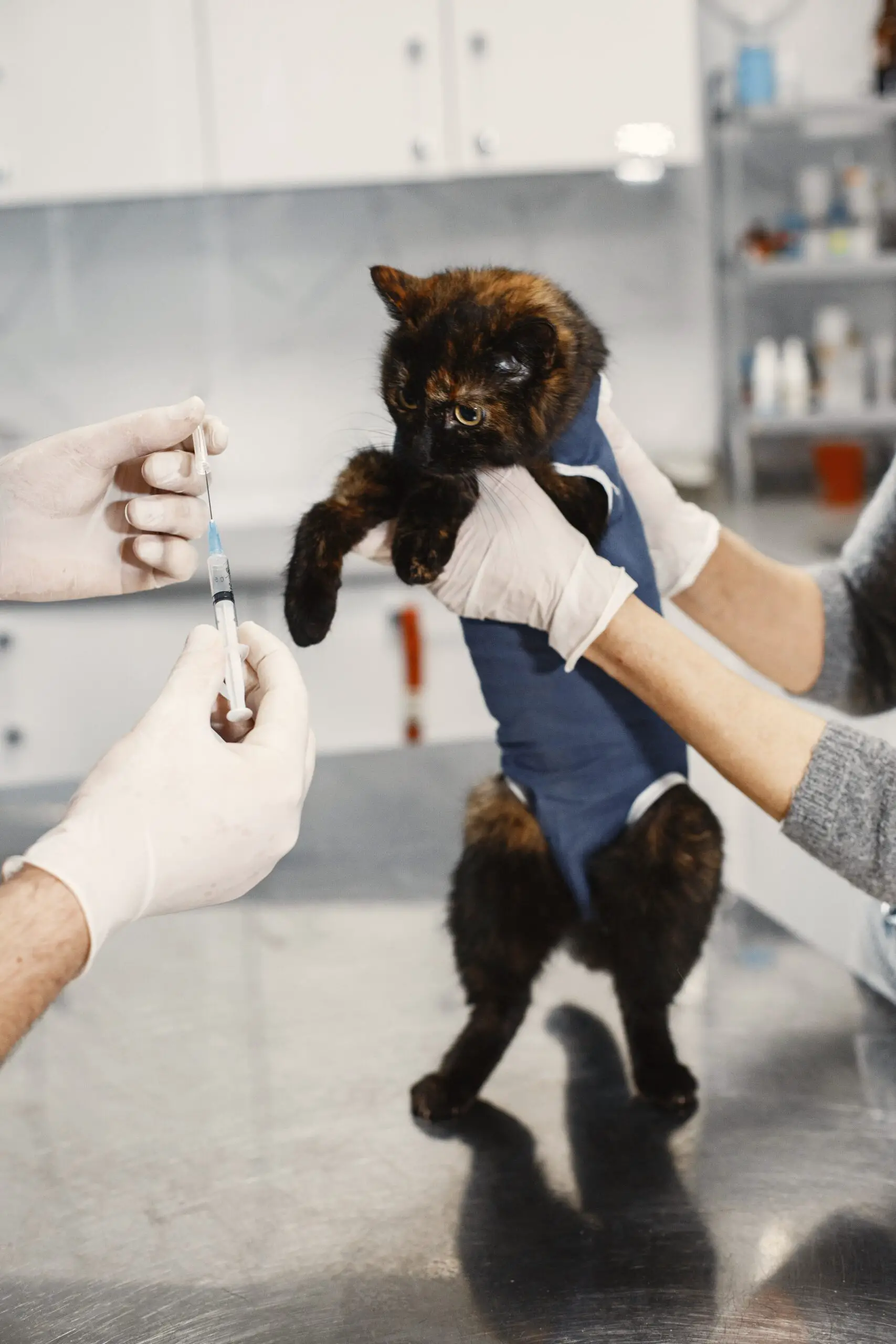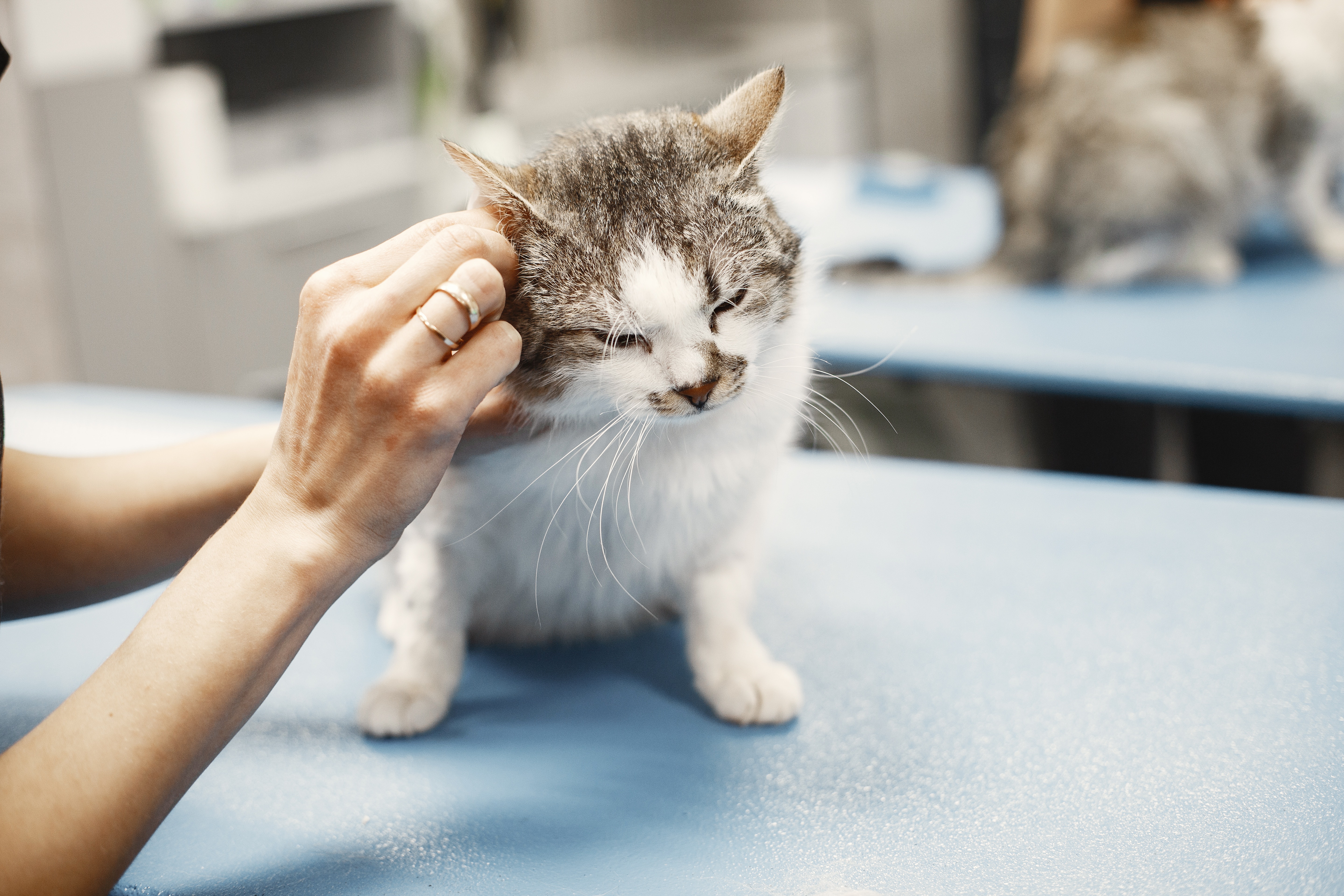Table of Contents
The FVRCP vaccine is a core vaccination for cats and it’s important to understand the details of what this vaccine does, how much it costs, and when your cat needs to receive boosters. As a pet owner, you should also be aware if the FVRCP vaccine is suitable for indoor cats or not as well as any potential side effects that may occur after administering the shot.
In this blog post we’ll take an in-depth look at all aspects related to the fvrcp vaccine for cats so you can make informed decisions about protecting your furry family member from preventable illnesses.
Table of Contents:
- What Is The FVRCP Vaccine?
- Vaccine Cost and Schedule
- Is The FVRCP Vaccine For Indoor Cats?
- Vaccine Side Effects and How Long Does It Last?
- Additional Considerations When Administering The FVRCP Vaccine To Your Cat
- FAQs in Relation to Fvrcp Vaccine for Cats
- Conclusion
What Is The FVRCP Vaccine?
The FVRCP vaccine, also known as the feline distemper vaccine, is a combination of three separate vaccines that are used to protect cats from several serious and potentially fatal diseases.
The “F” stands for feline viral rhinotracheitis (FVR), which is caused by the herpesvirus; the “V” stands for calicivirus (C); and the “P” stands for panleukopenia virus (PL). This combination vaccine helps to protect cats against these three common infectious diseases.
Overview of the Vaccine: The FVRCP vaccine combines all three individual vaccines into one injection, making it easier and more cost-effective to administer than giving each shot separately.
It is typically given as an intramuscular injection in kittens at 8 weeks old or older and then repeated every 3-4 weeks until they reach 16 weeks old. After this initial series of shots, boosters should be administered annually throughout your cat’s life.
Benefits of the Vaccine: By vaccinating your cat with FVRCP you can help reduce their risk of contracting any of these serious illnesses which could otherwise cause severe illness or even death in some cases.
Additionally, if your cat does contract one of these viruses after being vaccinated there may be less severe symptoms compared to unvaccinated cats who contract them due to partial immunity from vaccination.
The FVRCP vaccine protects against feline viral rhinotracheitis (FVR), calicivirus (C) and panleukopenia virus (PL).
These viruses can cause respiratory infections such as sneezing, coughing, eye discharge and nasal congestion; skin lesions such as ulcers on their nose or mouth; fever; loss of appetite; vomiting; diarrhea; dehydration; seizures or even death in some cases if left untreated.
Vaccine Cost and Schedule
The average cost of the FVRCP vaccine varies depending on where you get it and what type of vaccine is being administered. Generally, a single dose costs between $15 and $25. If your cat needs multiple doses or if they require additional boosters, the total cost can be significantly higher.
It’s important to follow your veterinarian’s recommended vaccination schedule for cats when administering the FVRCP vaccine. Most vets recommend that kittens receive their first dose at 8 weeks old, with subsequent doses every 3-4 weeks until 16 weeks old.
After this initial series of shots, adult cats should receive booster shots every 1-3 years depending on their risk factors and lifestyle habits.
Booster shots are an important part of maintaining immunity against diseases covered by the FVRCP vaccine such as feline viral rhinotracheitis (FVR), calicivirus (C), panleukopenia virus (P) and Chlamydophila felis infection (C). Booster shots help ensure that your cat remains protected from these illnesses over time by boosting their immune system’s response to them.
Depending on how often your vet recommends boosters, you may need to administer them more frequently than once per year in order to maintain optimal protection for your pet.
Is The FVRCP Vaccine For Indoor Cats?
It is an important part of keeping cats healthy, but it may not be necessary for all cats.
Benefits of FVRCP for Indoor Cats: The FVRCP vaccine can help protect indoor cats from diseases that are spread through contact with other animals or contaminated surfaces. Vaccinating your cat against these illnesses can reduce the risk of infection and serious complications if they do become infected.
, many boarding facilities require proof of vaccination before allowing a cat to stay there.
Risks of Not Administering FVRCP to Indoor Cats: If you choose not to vaccinate your indoor cat against the diseases covered by the FVRCP vaccine, they could still become infected if exposed to another animal carrying one or more viruses in this combination shot.
This could lead to serious illness or even death in some cases.
Vaccine Side Effects and How Long Does It Last?
Vaccinating your cat is an important part of keeping them healthy and protecting them from potentially fatal diseases. The FVRCP vaccine, also known as the “distemper” or “upper respiratory” vaccine, is one of the most common vaccines given to cats.
It covers a variety of illnesses including feline viral rhinotracheitis (FVR), calicivirus (C), and panleukopenia (P).
Common Side Effects of FVRCP in Cats: Vaccines are generally safe for cats but can cause mild side effects such as soreness at the injection site, lethargy, fever, loss of appetite, and vomiting. These symptoms usually resolve within 24-48 hours without treatment.
If any side effects persist longer than 48 hours or become severe it is important to contact your veterinarian right away.
The duration of immunity after receiving the FVRCP vaccine varies depending on factors such as age and health status when vaccinated.
Generally speaking, kittens should receive boosters every 3-4 weeks until they reach 16 weeks old while adult cats should receive booster shots every 1-3 years depending on their lifestyle and risk factors for exposure to disease.
Additional Considerations When Administering The FVRCP Vaccine To Your Cat
Before administering the FVRCP vaccine to your cat, it is important to consider a few additional factors. Pre-vaccination testing should be done in order to determine if your cat has any underlying health issues that could cause complications when receiving the vaccine.
Your veterinarian may recommend blood tests or other diagnostic tests prior to vaccination.
Adverse reactions can occur after receiving the FVRCP vaccine and should be monitored closely by you and your veterinarian. Signs of an adverse reaction include fever, lethargy, vomiting, diarrhea, loss of appetite, and difficulty breathing.
If any of these signs are observed after vaccination then contact your veterinarian immediately for further evaluation and treatment options.
Other factors to consider before administering the FVRCP vaccine include age, lifestyle habits (indoor vs outdoor), overall health status of your pet as well as potential exposure risks from other cats or animals in the area where they live or visit regularly.
Additionally, discuss with your vet whether there are alternatives available such as titer testing which measures immunity levels instead of vaccinating annually against certain diseases covered by this particular shot like feline viral rhinotracheitis (FVR) calicivirus (C) panleukopenia virus (P).
This will help ensure that you make an informed decision about what is best for both you and your pet’s individual needs when it comes to their health care plan.
FAQs in Relation to FVRCP Vaccine for Cats
Does my cat need the FVRCP vaccine?
Yes, the FVRCP vaccine is an important part of your cat’s health and wellness. It helps protect against feline viral rhinotracheitis, calicivirus, and panleukopenia – all potentially deadly viruses that can be spread from cat to cat.
The vaccine should be administered by a veterinarian as early as 8 weeks old with booster shots every 3-4 weeks until 16 weeks of age. After that, boosters are recommended annually or more often depending on risk factors such as lifestyle or environment. Vaccinating your pet will help keep them healthy and happy for years to come.
What is a FVRCP vaccine for cats?
FVRCP stands for feline viral rhinotracheitis, calicivirus and panleukopenia. It is a combination vaccine that helps protect cats from three serious diseases: feline viral rhinotracheitis (a form of herpesvirus), calicivirus, and panleukopenia (also known as feline distemper).
This vaccine is typically given to kittens at 8-10 weeks old, then again at 12-14 weeks old, followed by annual boosters. The FVRCP vaccine helps prevent the spread of these contagious illnesses which can cause severe respiratory problems in cats. It is an important part of preventive health care for cats and helps keep them healthy.
How often does my cat need the FVRCP vaccine?
The FVRCP vaccine is an important part of keeping your cat healthy and safe. Generally, cats should receive the FVRCP vaccine every 1-3 years depending on their age and health status. Kittens should receive their first dose at 8 weeks old, followed by a booster shot every 3-4 weeks until they are 16 weeks old.
After that, annual boosters are recommended for most cats to ensure continued protection against feline viral rhinotracheitis, calicivirus, and panleukopenia (distemper). However, it’s best to consult with your veterinarian about the specific vaccination schedule for your pet as individual circumstances may vary.
How long is a FVRCP shot good for?
The FVRCP vaccine, also known as the feline distemper vaccine, is a combination of three vaccines that protect cats from several common illnesses. The core components of this vaccine are feline viral rhinotracheitis (FVR), calicivirus (C) and panleukopenia (P).
This vaccination is typically given to kittens at 8-9 weeks old and then repeated every 3-4 weeks until they reach 16 weeks old. After that, it should be administered annually or biennially depending on your veterinarian’s recommendation. The FVRCP vaccine is generally considered to be effective for one year after the last dose.
Conclusion
In conclusion, the FVRCP vaccine is an important part of keeping your cat healthy and protected from certain diseases. It’s important to understand the cost and schedule for administering this vaccine, as well as whether or not it is suitable for indoor cats.
Additionally, you should be aware of any potential side effects that may occur after receiving the FVRCP vaccine and how long its protection lasts. By understanding all aspects of this vaccination, you can make sure that your cat receives the best possible care when it comes to their health.
Are you a cat owner looking for information on the FVRCP vaccine? This is an important part of your pet’s health and well-being. Our website offers detailed, up to date information about this crucial vaccine so that you can make informed decisions when it comes to protecting your furry friend from disease.
We also provide helpful resources such as reminders for upcoming vaccinations, advice on how to prepare cats for their vet visits, and more. Visit our website today and take charge of your cat’s healthcare!
The FVRCP vaccine, also known as the feline distemper vaccine, is a combination of three vaccines that protect cats from several common illnesses. The core components of this vaccine are feline viral rhinotracheitis (FVR), calicivirus (C) and panleukopenia (P). This vaccination is typically given to kittens at 8-9 weeks old and then repeated every 3-4 weeks until they reach 16 weeks old. After that, it should be administered annually or biennially depending on your veterinarian's recommendation. The FVRCP vaccine is generally considered to be effective for one year after the last dose.<\/span><\/p> The FVRCP vaccine, also known as the feline distemper vaccine, is a combination of three vaccines that protect cats from several common illnesses. The core components of this vaccine are feline viral rhinotracheitis (FVR), calicivirus (C) and panleukopenia (P). This vaccination is typically given to kittens at 8-9 weeks old and then repeated every 3-4 weeks until they reach 16 weeks old. After that, it should be administered annually or biennially depending on your veterinarian's recommendation. The FVRCP vaccine is generally considered to be effective for one year after the last dose.<\/span> "}}]}

